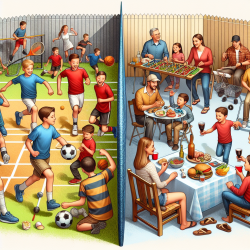In the ever-evolving field of autism research, understanding the nuances of emotional and physiological responses is crucial for developing effective therapeutic strategies. A recent study titled Pupil contagion variation with gaze, arousal, and autistic traits sheds light on the intriguing phenomenon of pupil contagion and its implications for individuals with autism.
Understanding Pupil Contagion
Pupil contagion refers to the unconscious adaptation of one's pupil size in response to observing another's pupils. This phenomenon is believed to reflect a transfer of arousal between individuals. The study explored how pupil contagion correlates with physiological changes such as heart rate and skin conductance, particularly in children with varying degrees of autistic traits.
Key Findings from the Research
- Pupil Contagion and Arousal: The study found that pupil contagion was associated with changes in heart rate but not skin conductance when participants' gaze was directed to the eye region of stimuli.
- Gaze Focus: Restricting gaze to the eye region enhanced pupil contagion effects, highlighting the importance of eye contact in social interactions.
- Autistic Traits Correlation: A positive correlation was observed between pupil contagion and autistic traits when gaze was focused on the eyes, suggesting that individuals with higher autistic traits may experience heightened arousal during eye contact.
Implications for Practitioners
The findings from this study offer valuable insights for practitioners working with individuals on the autism spectrum. Here are some ways you can integrate these insights into your practice:
- Encourage Eye Contact: Use exercises that gradually increase comfort with eye contact, as focusing on the eye region may enhance emotional engagement.
- Monitor Physiological Responses: Consider incorporating tools to measure heart rate or other physiological indicators during therapy sessions to better understand individual responses.
- Tailor Interventions: Recognize that individuals with higher autistic traits may have unique responses to social stimuli. Tailor interventions to accommodate these differences and promote positive social interactions.
- Further Research: Stay informed about ongoing research in this area. Understanding the mechanisms behind pupil contagion can lead to more effective strategies for supporting emotional and social development in individuals with autism.
The Path Forward
This study opens new avenues for understanding how physiological responses can inform therapeutic practices. By focusing on individual differences in arousal and gaze patterns, practitioners can develop more personalized approaches that cater to the unique needs of each individual.
To read the original research paper, please follow this link: Pupil contagion variation with gaze, arousal, and autistic traits.










